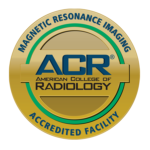How is radiation dose measured?
Patients often want to know the radiation “dose” they will receive during an examination. The determination of a radiation dose is very complex because it is more than just measured radiation exposure. It is actually the amount of radiation absorbed by the patient. This is calculated by using many factors such as patient body size, and formulas that are constantly changing as science and professional organizations examine past exposures and their effects. That is why any dose that is provided to a patient will be an estimate.
To measure radiation dose, the unit of measurement is millisievert (mSv). additional radiation dose measurement units include rad, rem, Roentgen, Sievert, and Gray). We are all exposed to radiation from natural sources all the time. The average person in the United States received an effective dose of about 3 mSv per year from naturally occurring materials.
In simple terms, we can compare the radiation exposure from one chest x-ray as equivalent to the amount of radiation exposure one gets from our natural surroundings in 10 days.
What does this mean to me?
The decision to have an x-ray or imaging exam is a medical one, based on the benefit from the exam and the potential risk from radiation. If you have had frequent x-ray exams and change healthcare providers, it is a good idea to keep a record of your imaging history. This can help your new provider make informed decisions regarding any additional imaging exams that you may need. It is also important to tell your doctor if you are pregnant.
What makes Intermountain Medical Imaging the right choice?
Intermountain Medical Imaging is accredited by the American College of Radiology (ACR) for all areas that are accepted for ACR accreditation. That includes CT, MRI, PET, US, and Mammography. This means we MUST and DO comply with all best practices standards. This ensures that:
- The physicians reading your scan from Gem State Radiology, have met stringent education and training standards.
- The technologists operating the equipment are certified by the appropriate agencies.
- The imaging equipment is surveyed regularly by a medical physicist to make sure that it is functioning properly and is taking optimal images.
Medical imaging exams have been directly linked to greater life expectancy, declines in cancer mortality rates, and are generally less expensive than the invasive procedures that they replace. However, widespread use has resulted in increased exposure for Americans.
The Board certified, fellowship trained radiologists at Gem State Radiology and Intermountain Medical Imaging understand the underlying physics of radiation and are uniquely qualified to decide on appropriate and safe imaging for our patients. Radiologists are the only specialists whose entire training is devoted to imaging and radiation safety.
A radiologist is a physician who specializes in medical imaging. This requires four years of residency training and a national board certification exam. The residency training occurs after the physician has completed medical school and a year of internship. Additional fellowship training can then be acquired in a particular subspecialty of Radiology.
Gem State Radiology follows the ACR Appropriateness Criteria®, which assists them in prescribing the most appropriate imaging exam (particularly when an imaging exam that does not use radiation may be more appropriate for a given condition). Advanced imaging studies are tailored specifically by the radiologist based on the history of the patient and the area of clinical concern.
At Intermountain Medical Imaging we are acutely aware of radiation safety and our radiologists work to keep radiation exposure to a minimum.
Our Radiologists advise that no imaging exam should be performed unless there is a clear medical benefit that outweighs any associated risk. In addition, we support the “as low as reasonably achievable” (ALARA) concept which utilizes the minimum level of radiation needed in an imaging exam to achieve the necessary results.
Estimated radiation doses compared with natural radiation dosing
To explain it in simple terms, we can compare the radiation exposure from one chest x-ray as equivalent to the amount of radiation exposure one experiences from our natural surroundings in 10 days. The following are comparisons of effective radiation dose with background radiation exposure for several radiological procedures described at the website www.radiologyinfo.org.
| For this Procedure: | Your effective estimated radiation dose is: | Comparable to natural background radiation for: |
|---|---|---|
| Abdominal Region: | ||
| CT Abdomen Pelvis | 10 mSv | 3 years |
| CT Chest, Abdomen and Pelvis | 10 mSv | 3 years |
| CT Colonoscopy | 10 mSv | 3 years |
| Intravenous Pyelogram (IVP) | 3 mSv | 1 year |
| Radiography of Lower GI Tract | 8 mSv | 3 years |
| Radiography of Upper GI Tract | 6 mSv | 2 years |
| Bone: | ||
| Radiography-Spine | 1.5 mSv | 6 months |
| Radiography-Extremity | 0.0001 mSv | Less than 1 day |
| Bone Densitometry | 0.0001 mSv | Less than 1 day |
| Central Nervous System: | ||
| CT Head | 2 mSv | 8 months |
| CT Spine | 6 mSv | 2 years |
| Myelography | 4 mSv | 16 months |
| Chest: | ||
| CT Chest | 7 mSv | 2 years |
| CT Chest Low Dose | 1 to 3 mSv | 4 months to 1 year |
| Radiography – Chest | 0.1 mSv | 10 days |
| Children’s Imaging: | ||
| Voiding Cystourethrogram (5–10 yr old) | 1.6 mSv | 6 months |
| Face and Neck: | ||
| CT Sinuses | 0.6 mSv | 2 months |
| Heart: | ||
| Cardiac CT for Calcium Scoring | 3 mSv | 1 year |
| Other: | ||
| Hysterosalpingography | 1 mSv | 4 months |
| Mammography | 0.7 mSv | 3 months |

